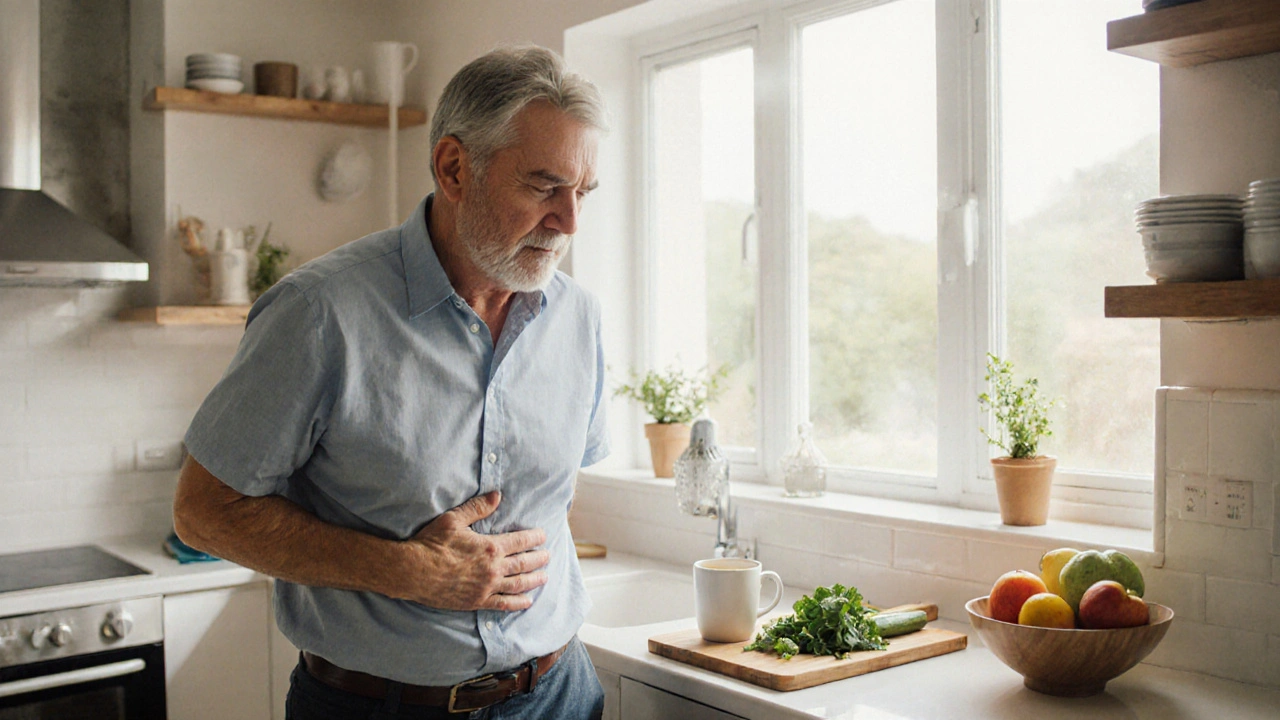Ulcer Symptoms: How to Recognize and Deal With Them
When talking about ulcer symptoms, the warning signs that your stomach lining is under attack, often showing as pain, burning, or digestive upset. Also known as stomach ulcer signs, they can signal a deeper issue like Peptic Ulcer Disease, a condition where sores develop in the lining of the stomach or duodenum. In many cases, the culprit behind these signs is H. pylori, a bacteria that erodes the protective mucus and triggers inflammation. Recognizing the patterns early helps you act before discomfort turns into complications.
What Triggers Those Uncomfortable Signs?
Beyond infection, several everyday factors can ignite ulcer symptoms. Regular use of NSAIDs, pain relievers like ibuprofen or aspirin, can wear down the stomach’s defenses, especially when taken on an empty stomach. Stress isn’t just a feeling—it can increase stomach acid production and slow healing, making the lining more vulnerable. Add a diet high in spicy foods, caffeine, or alcohol, and the risk climbs. Smoking narrows blood vessels, reducing the supply of nutrients needed for tissue repair. Each of these elements interacts with the stomach environment, creating a perfect storm for ulcer development.
When the lining is compromised, the body sends signals: a gnawing or burning pain that often worsens between meals or at night, a feeling of fullness, bloating, and sometimes nausea or vomiting. Some people notice a loss of appetite or unexplained weight loss, while others experience dark or black stools—a sign of bleeding. These symptoms don’t appear in isolation; they often overlap with other digestive issues, which is why a clear diagnosis matters.
Diagnosis typically starts with a review of your symptoms and medical history, followed by tests like a breath test for H. pylori, stool antigen tests, or an endoscopy to visualize the ulcer directly. Once confirmed, treatment usually includes a combination of antibiotics to eradicate the bacteria and Proton Pump Inhibitors, medications that reduce stomach acid production, giving the tissue a chance to heal. In cases linked to NSAID use, doctors may recommend switching to alternative pain relief or adding protective agents like misoprostol.
Even with medication, lifestyle tweaks play a huge role. Cutting back on alcohol, quitting smoking, limiting caffeine, and eating smaller, more frequent meals can ease the strain on the stomach lining. Managing stress through exercise, mindfulness, or therapy helps keep acid levels in check. Staying hydrated and avoiding late‑night snacking also reduce irritation. These practical steps work hand‑in‑hand with prescription therapy to speed recovery and keep ulcers from recurring.
Below you’ll find a curated set of articles that dive deeper into each of these areas—whether it’s understanding how H. pylori spreads, spotting the subtle signs of NSAID‑related ulcers, or mastering the daily habits that protect your gut. Use this guide as a roadmap to identify your symptoms, explore treatment options, and adopt the lifestyle changes that keep your stomach happy.

 Sep, 28 2025
Sep, 28 2025